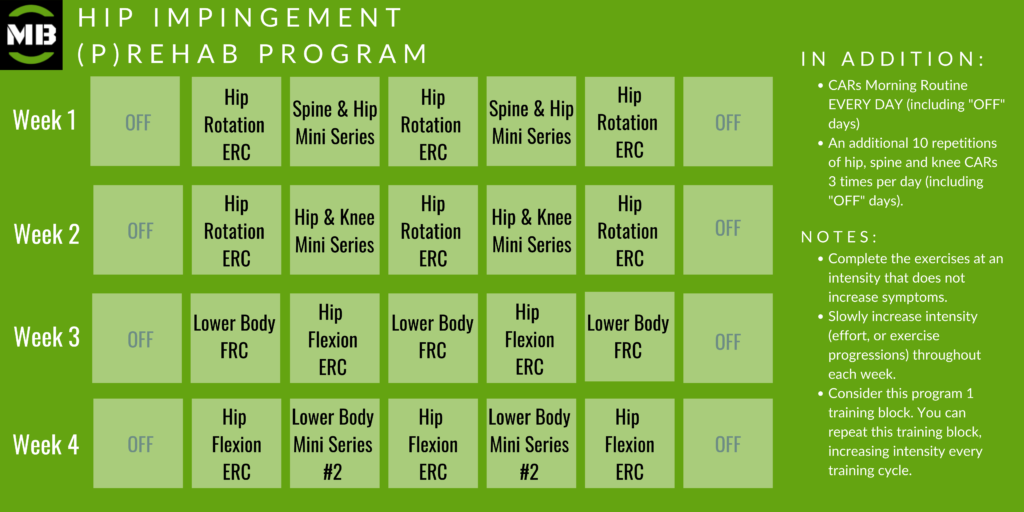Hip (P)Rehab Program

The hip is a ball and socket joint, with the ball-shaped femoral head attaching into the bowl-shaped acetabulum of the pelvis. This structural design allows for more range of motion in all planes. Hip impingement can happen in different areas of the joint, the most common being at the anterior side. If you pull your knee toward your chest or squat down and you feel a pinching or restricted feeling in the front crease if your hip, that one sign your experiencing an anterior hip impingement.
Hip impingement can happen at different levels. Extra-articular hip impingements refer to a pinching of tissues outside of the hip joint. Central iliopsoas impingement and subspine impingement are some examples of these. On the other hand, intra-articular impingement occurs inside of the joint itself.
Intra-articular impingement of the anterior hip can be different things like a hip labrum tear, osteoarthritis or femoral acetabular impingement (FAI). FAI is a structural (bone) abnormality in the acetabulum, in the femur, or both that caused them to abut each other moving into hip flexion and internal rotation. Comparing all impingement types, structural impingements are the most difficult to manage.
There are many different types of hip impingements, but they are all a result of the same thing… insufficient joint space. As you bring your hip up into flexion, there must be enough space between the acetabulum and the femoral head to allow for those two bones to move relative to each other. When the hip joint capsule is restricted and lacks space, you run out of space on the closing side of the joint and something gets pinched. The different types of impingements just differentiate the structures that are becoming impinged.
The type of impingement will determine the prognosis and other potential treatment options. However, since they all have the same underlying root cause, they can all be (p)rehabbed very similarly. In all cases, joint-specific training with a heavy emphasis on expanding hip joint workspace it essential.
The Hip Impingement (P)Rehab Program starts with heavy hip rotation training. The long, hard efforts at the end ranges of hip internal rotation and external rotation will stimulate joint space expansion and joint capsule integrity. From there, we will progress into hip flexion end-range training to build strength and control through our new range of motion. Throughout the program, spine and knee training will be incorporated to complement the hip-specific training and build a better mover.
